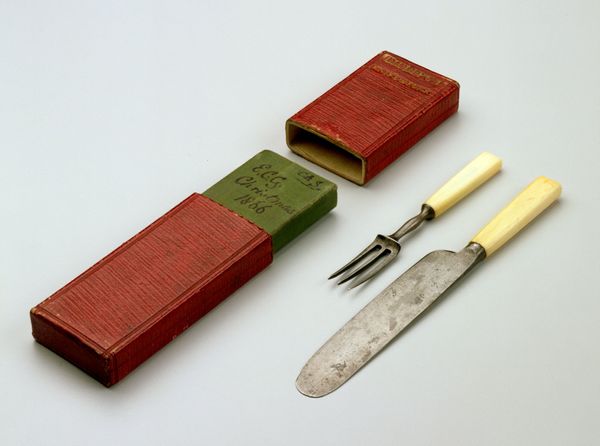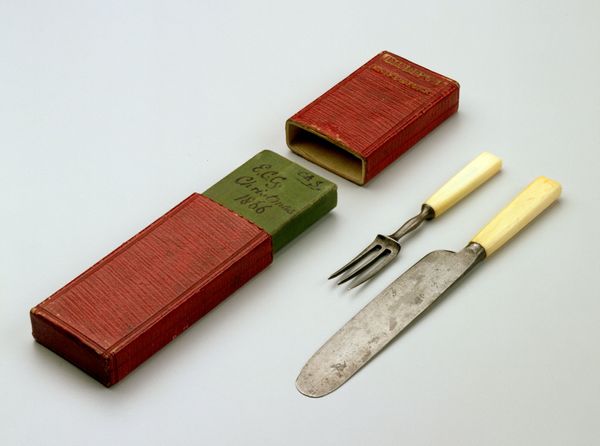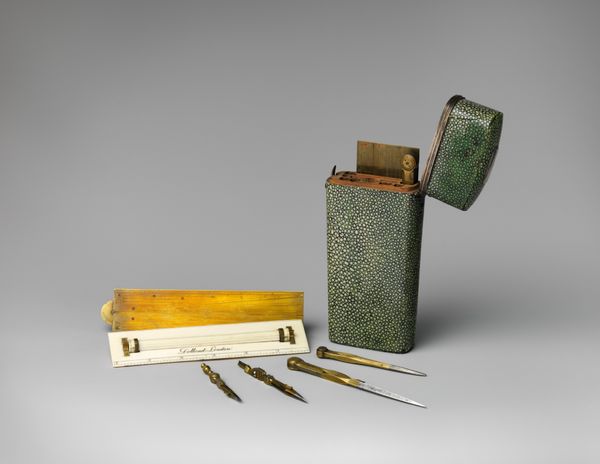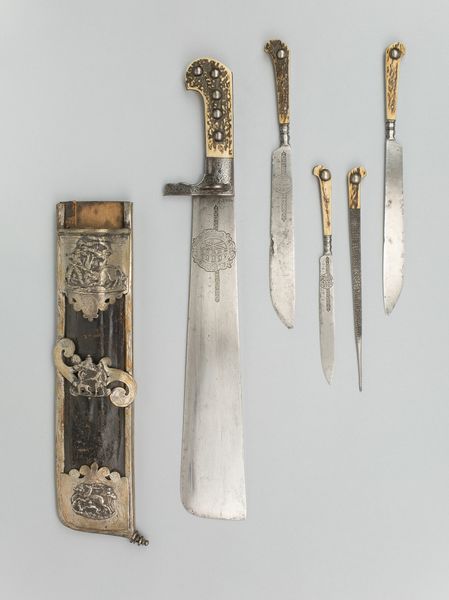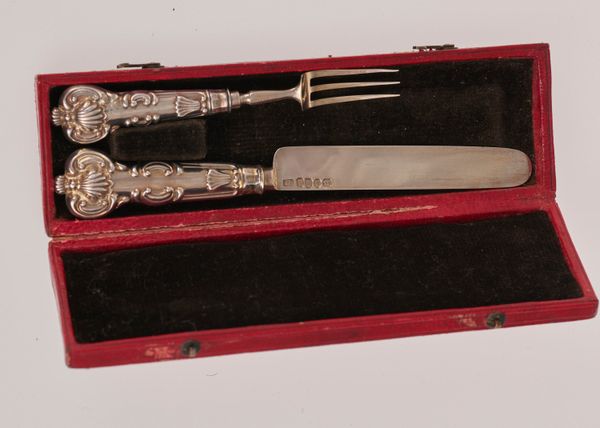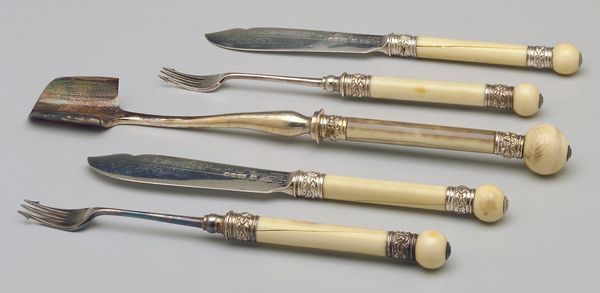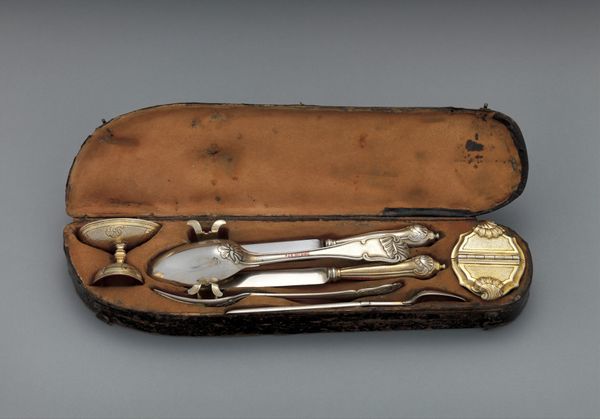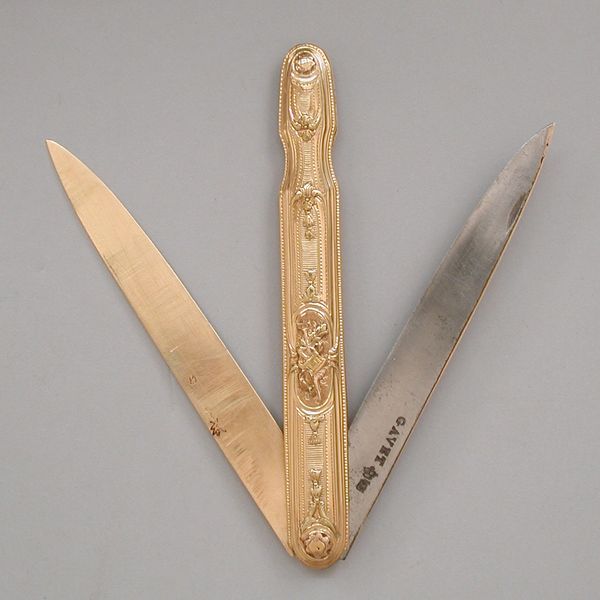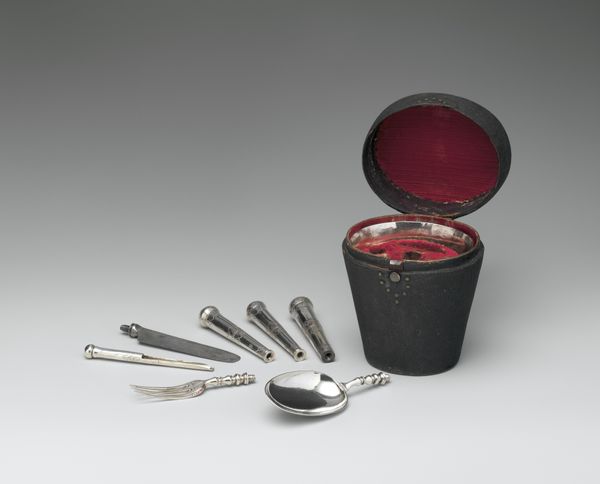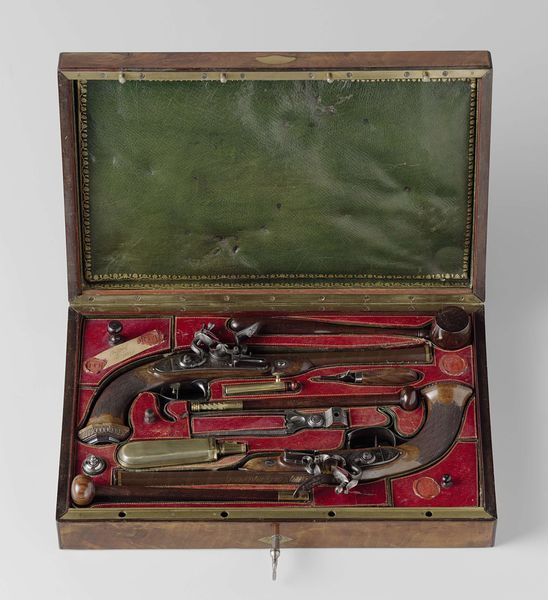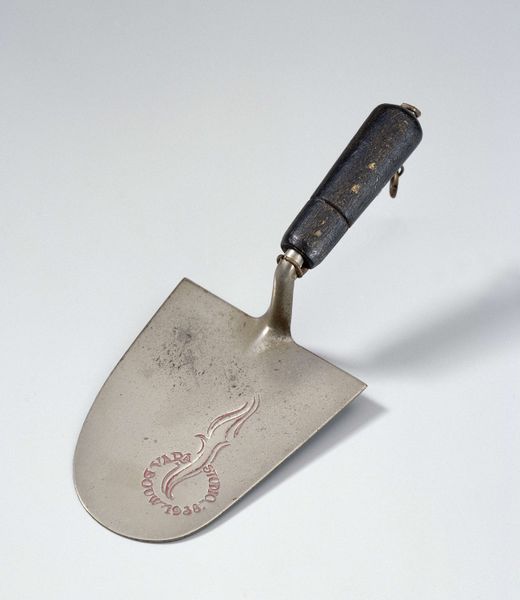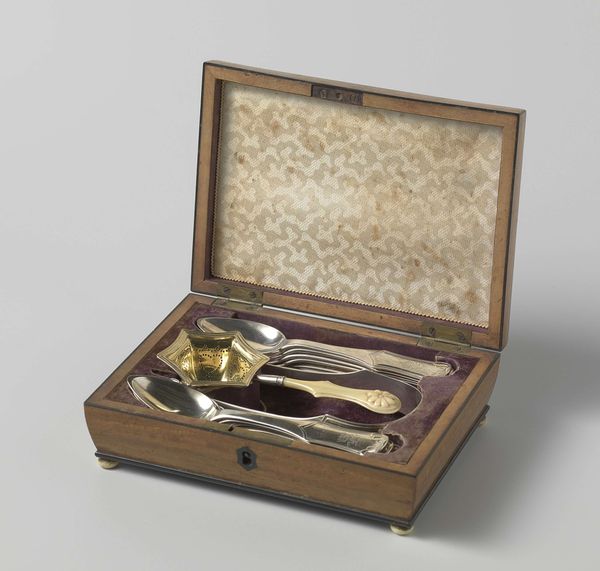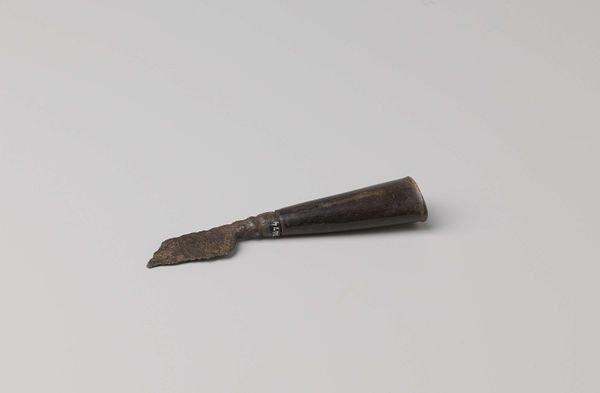
steel
#
steel
#
england
#
decorative-art
Copyright: Public Domain
This Lilliput cutlery set, including a case, fork, and knife, was created by Paine & Simmson in 1866. The inscription on the case, “E.C.G. Christmas 1866,” hints at its origin as a gift, perhaps for a child. During the Victorian era, gifts embodied profound social meaning, often reflecting relationships, status, and moral values. Child-sized objects served as both playthings and tools for socialization. The act of gifting, particularly during Christmas, was laden with the weight of familial expectations and social conventions. This was also the time of vast British colonial expansion. While the child this cutlery set was gifted to was likely raised with upper-class sensibilities and values, the ivory handle acts as a blunt reminder of the colonialism and exploitation of foreign lands that made the gift possible. Consider the intimacy and care invested in such a personal present, and the complex historical currents flowing beneath it.
Comments
minneapolisinstituteofart almost 2 years ago
⋮
This fork and knife set is named after Lilliput, the fictional island with tiny inhabitants in Gulliver's Travels (1726) by Jonathan Swift. Lilliput was at war with its neighboring island over which end of a boiled egg should be eaten first. "Lilliput" became a popular term for miniature, as well as a subtle reference to dining etiquette. The inscription on the box of this small flatware set indicates it was given as a Christmas present in 1866.
Join the conversation
Join millions of artists and users on Artera today and experience the ultimate creative platform.
